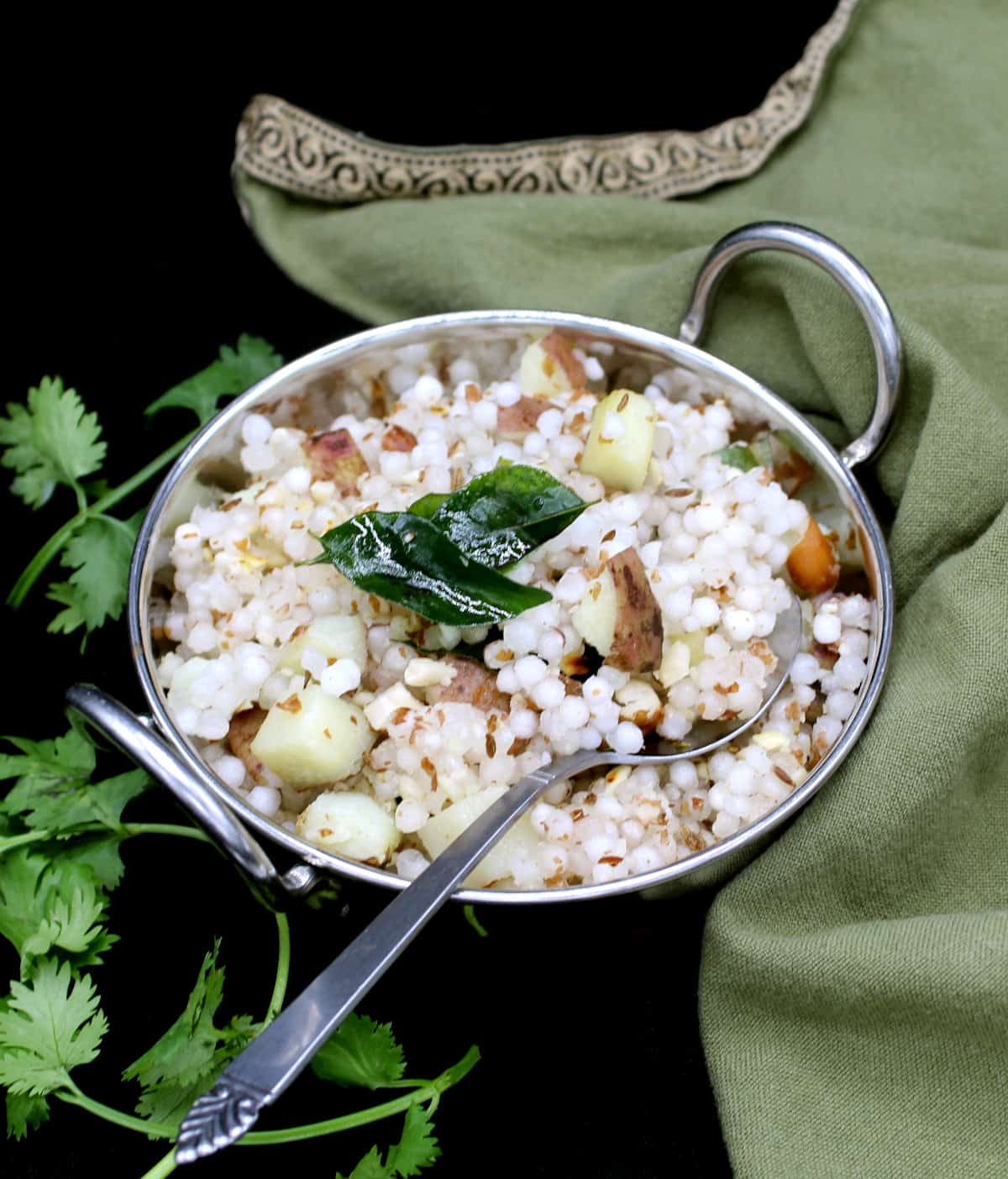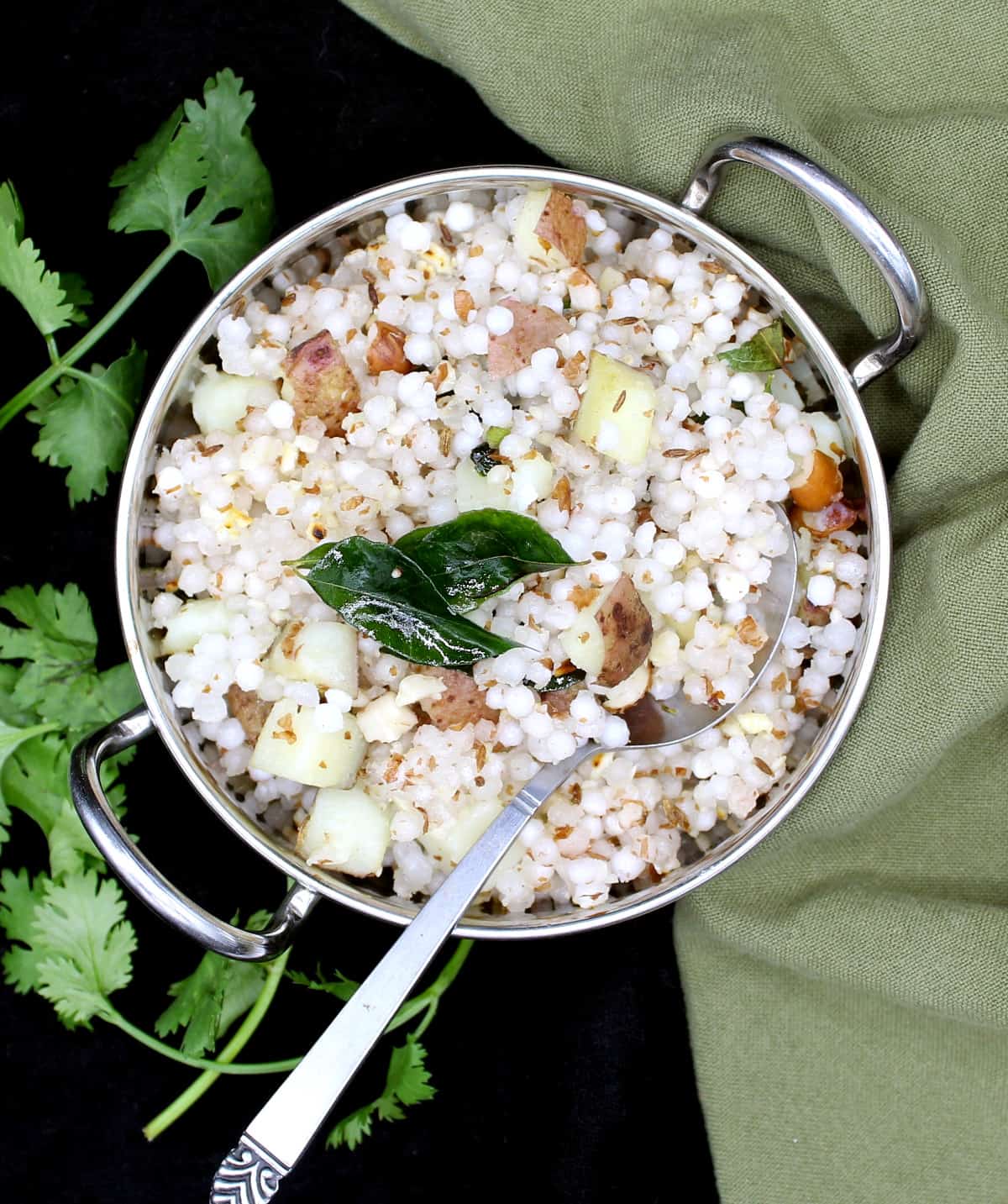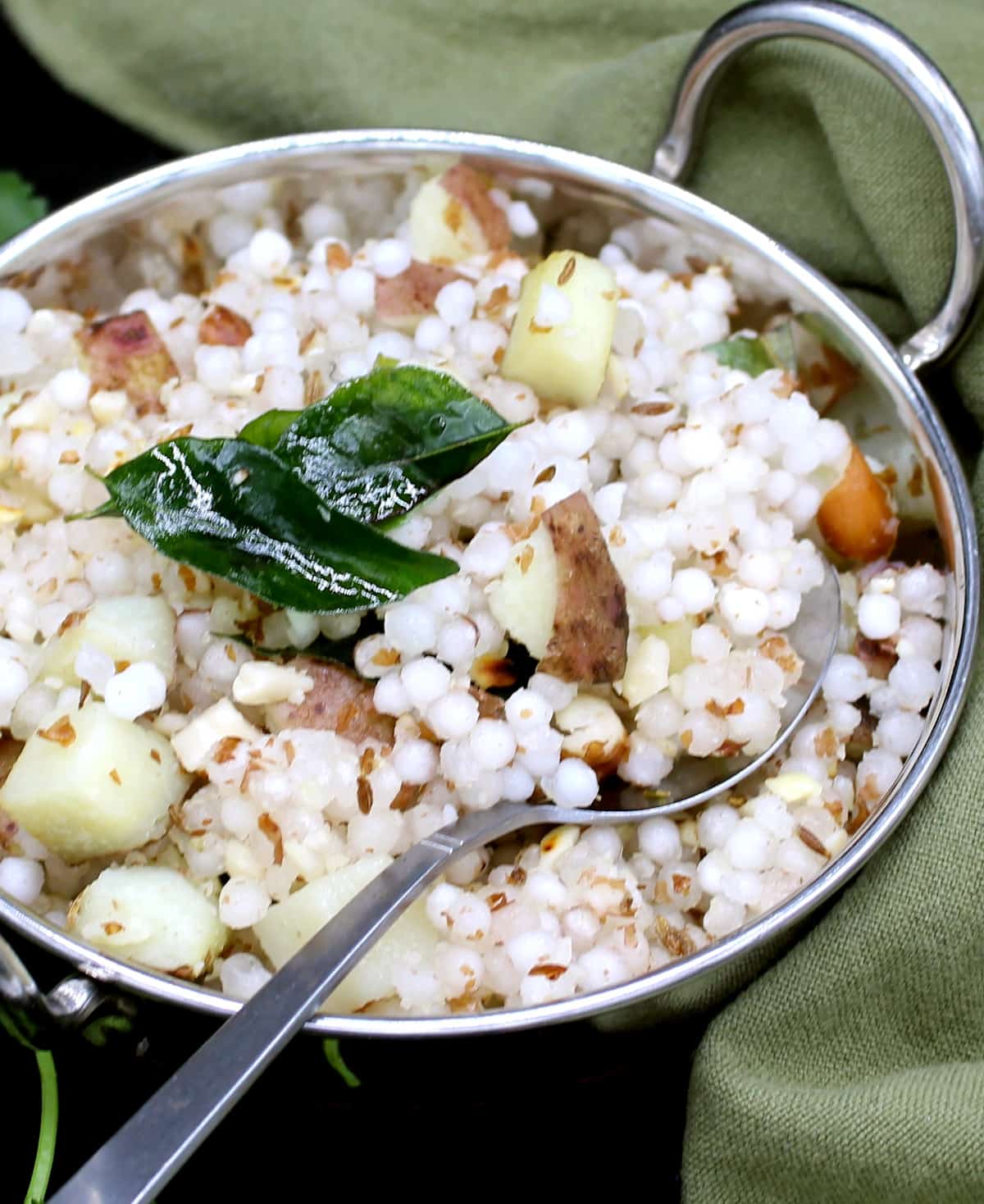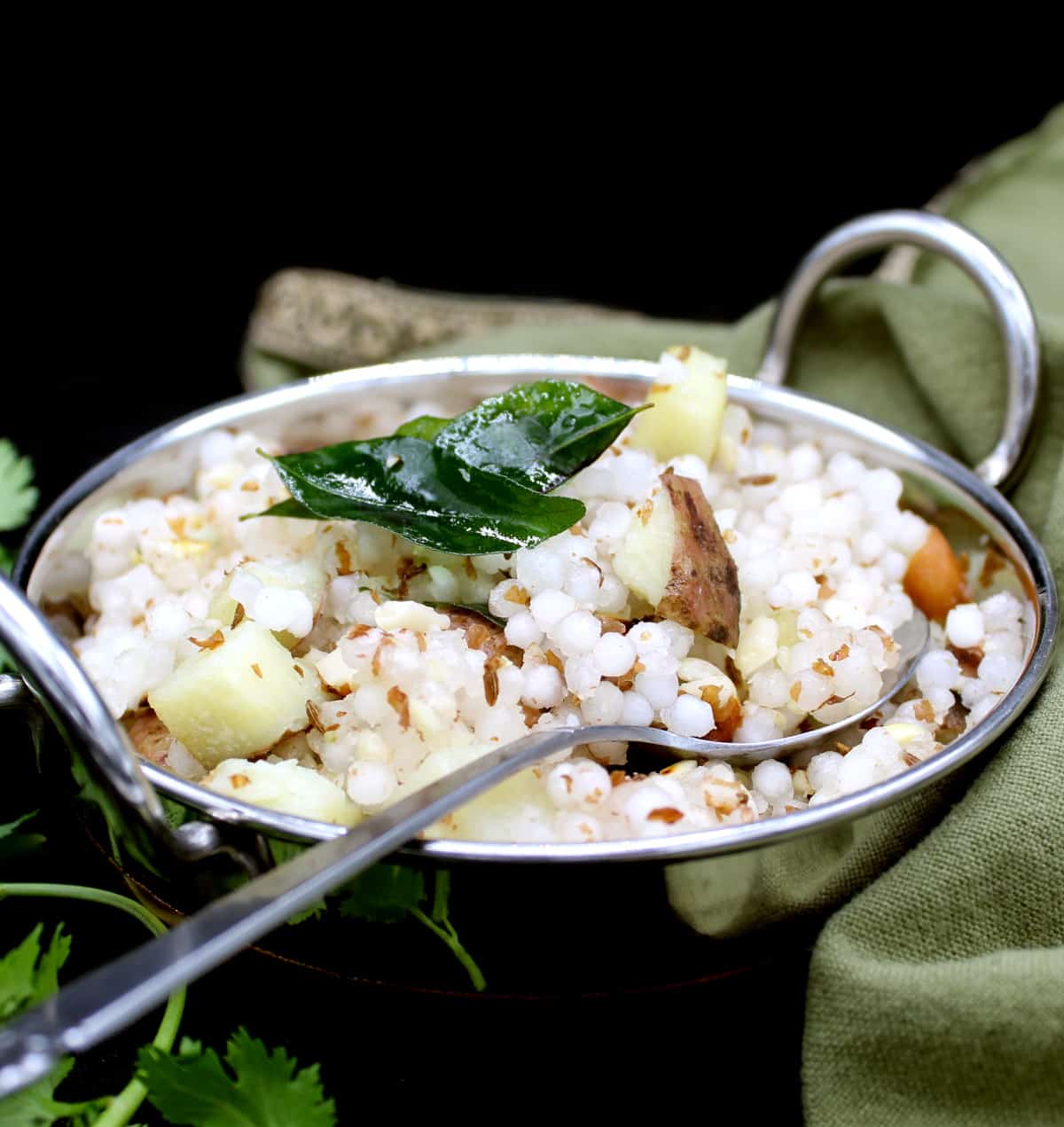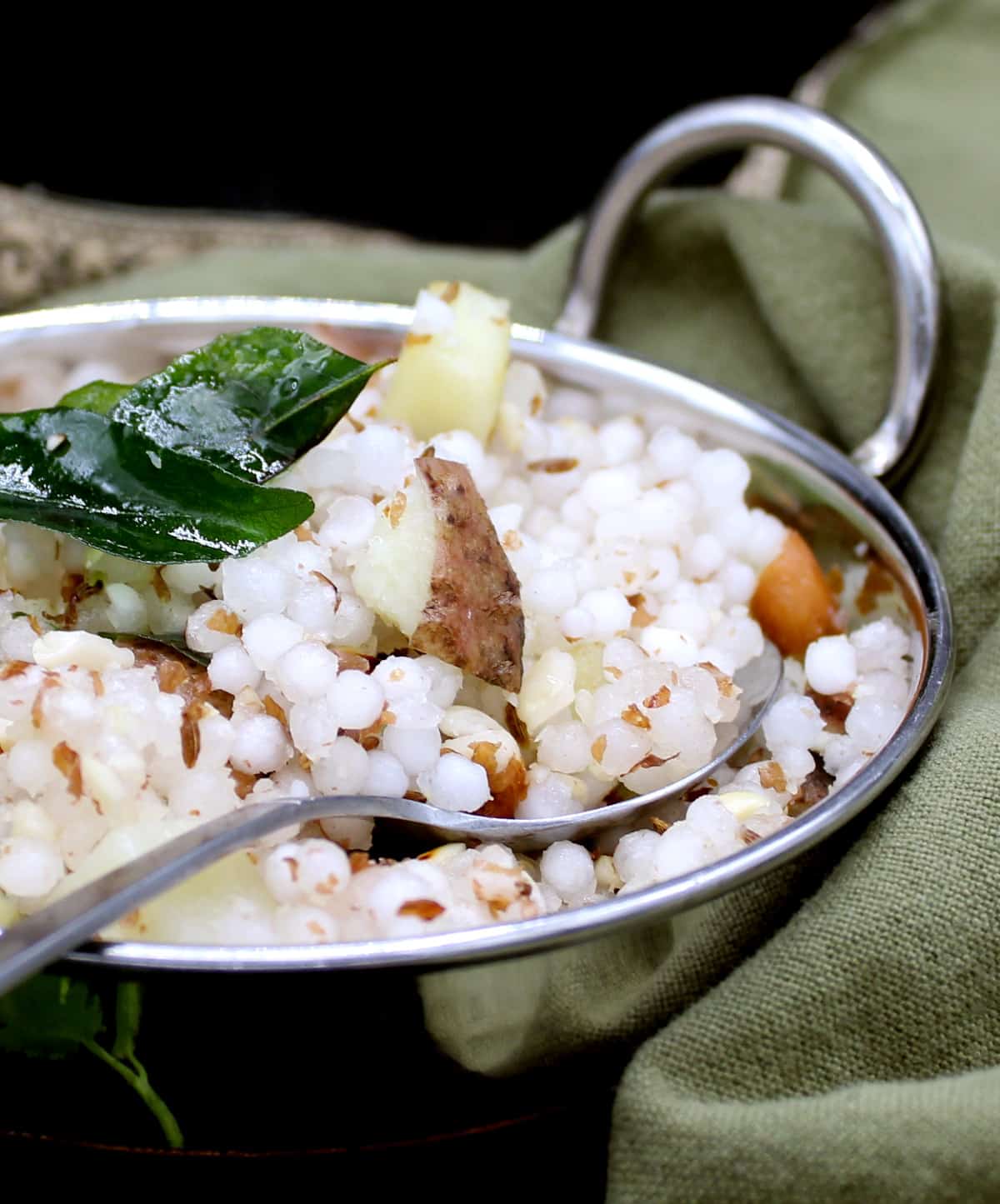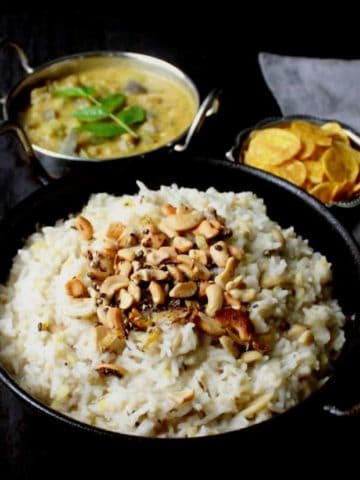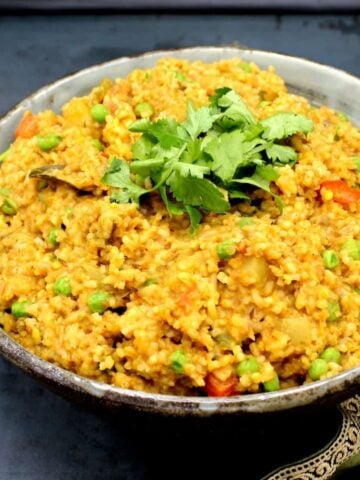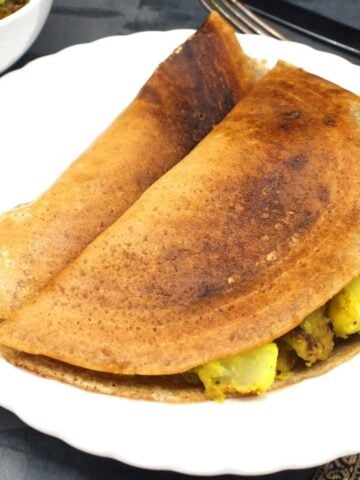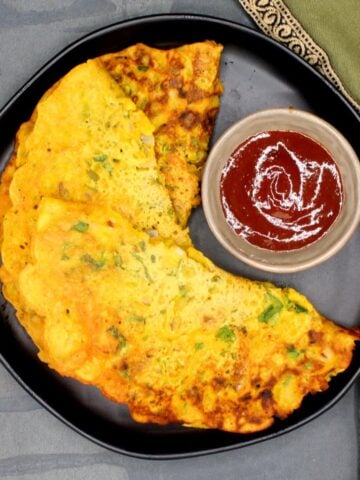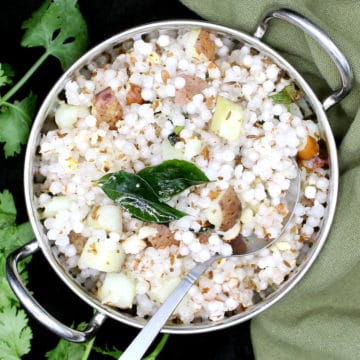You might also enjoy these Indian breakfast recipes for upma and rava idli. For me, a Sabudana Khichdi was the highlight of the days when my parents–both or either–were on a fast. And if you know anything about Indians, you know that would be pretty often. Long ago, someone in India discovered the fastest way to the almighty’s ear was through an empty stomach–your empty stomach. As a result, religious fasting, done ostensibly to invoke the gods and goddesses into granting you wishes, caught on like wildfire. And given that Hindus have a pantheon of 33 million gods to please, each with a unique job, you can imagine just how many fasts were spawned. Want a baby? There’s a fast for that. Looking for a bride or a groom? Yep, we’ve got one for that too. Taking an important test? There’s more than one kind for that! Religious holidays are also a popular time for fasting and right now, India is in the midst of Navratri, which is nine days of toasting woman power, or the goddess Durga, who happens to be the most kickass of Indian goddesses–and I mean that literally. According to Hindu mythology, Durga killed this terrible, invincible demon who was terrorizing humanity over nine days of fierce battle. So each year, for nine nights, the young and old come out full force to celebrate her and dance in large, community gatherings. Many also fast during this time. If you know anything about Indians and fasting, you know that we don’t see fasts as a time for withholding food. In fact, fasters frequently pack in as much sustenance as they would on an average day. The way they do it is by cooking up and eating foods they don’t normally eat – that way the gods are happy you’re giving up your usual food and you don’t have to sit around starving all day, see? A lot of this cheat food is gluten-free. And there’s usually lots of it, all delicious, of course, because you’d have to be a fool to cheat with horrible food, wouldn’t you? 😉 One of those delicious fasting foods is Sabudana Khichdi. Sabudana Khichdi is light on the stomach and savory, so it has the desired effect of not making you feel like you went too far, while tasting good enough to make the idea of fasting more than bearable. I adore Sabudana Khichdi and I often cook it up for a quick breakfast or a snack, as do so many other Indians. Jay and Desi love it too. Check to get new recipe updates by email.
This is an incredibly easy dish to make with just seven ingredients. There’s no extensive cutting and chopping required. And it’s one of those traditional recipes with which almost no one tampers because whoever made it first simply got it exactly right. Not many foods you can say that about.
Tips for making the perfect, non-sticky Sabudana Khichdi:
As easy as Sabudana Khichdi is to make, there’s one place where you can mess up, big time. If you’re used to gluten-free cooking, you know that gf foods are usually starchy, and if you’ve cooked with tapioca flour, you know that it’s starchier than most starches, and is often used for thickening foods and as a binder. Tapioca pearls or sabudana need to be soaked in water before you cook them–in fact they hardly need any time on the stove. And while you can soak most grains and legumes in as much water for as long as you like, you cannot do that with sabudana. Otherwise, chances are they will take on too much water, turn extremely starchy, and you will end up with a gooey mess in your skillet that no one wants to eat. So here’s how you can avoid that, no guesswork needed. Rinse the sabudana, thoroughly, in running water. You can do this by placing the sabudana in a colander and holding it under running water for at least a minute. Or, if you don’t have a colander, wash it in three to four changes of water. Then, place the sabudana in a bowl and cover it with just enough water so the tops of the sabudana are immersed. This is really important. You don’t want the tapioca pearls to be covered by an inch or water or half an inch of water or even a centimeter of water; you just want enough water in the bowl so that the sabudana is immersed, but barely. This ensures that the sabudana can’t keep glugging the water and getting softer and starchier by the minute. Easy. Now let it stand for 2-3 hours. About halfway through, using a fork, just delicately move the sabudana around so the ones at the top move down. This way you’ll make sure the ones on top do not remain hard. By the time you’re ready to cook them, the sabudana should be just slightly al dente and fluffy and separate. To cook the sabudana, all you need to do is to heat the oil, add to it cumin seeds, chopped green chili peppers like jalapeno, and curry leaves. Let the curry leaves turn crispy, then add in cooked, diced potatoes. The potatoes should be just tender, and try and use red or yellow potatoes, not russets, which tend to be starchier. Fry the potatoes until they start to turn golden-brown, then add in the sabudana (fluff them with a fork before adding to the wok so the grains separate) and coarsely ground peanuts. You want the peanuts to be textured, and not powdered. Some of the peanuts can even be whole. I achieve this by pulsing the peanuts once or twice in the food processor. To make the recipe nut-free, leave out the peanuts. You can add a couple of tablespoons of shredded coconut instead, but if you do, add it at the end, just before serving. Next add salt, stir-fry the tapioca until it starts to look translucent, which should just take two-three minutes, and turn off the heat. Done. Because sabudana khichdi is a Maharashtrian dish (from the western Indian state of Maharashtra), and Maharashtrians almost always stir a spoonful of sugar into anything savory they cook up, you can add a teaspoonful of sugar to this dish along with the salt if you want to stick with tradition. I don’t, and it’s completely optional. You can garnish the sabudana khichdi with cilantro, but don’t wash the cilantro and add it right away because you really want to keep moisture at a minimum in your dish. And add it at the end, when the cooking is done and you’re about to serve.
More Indian Vegan Recipes
Recipe card
